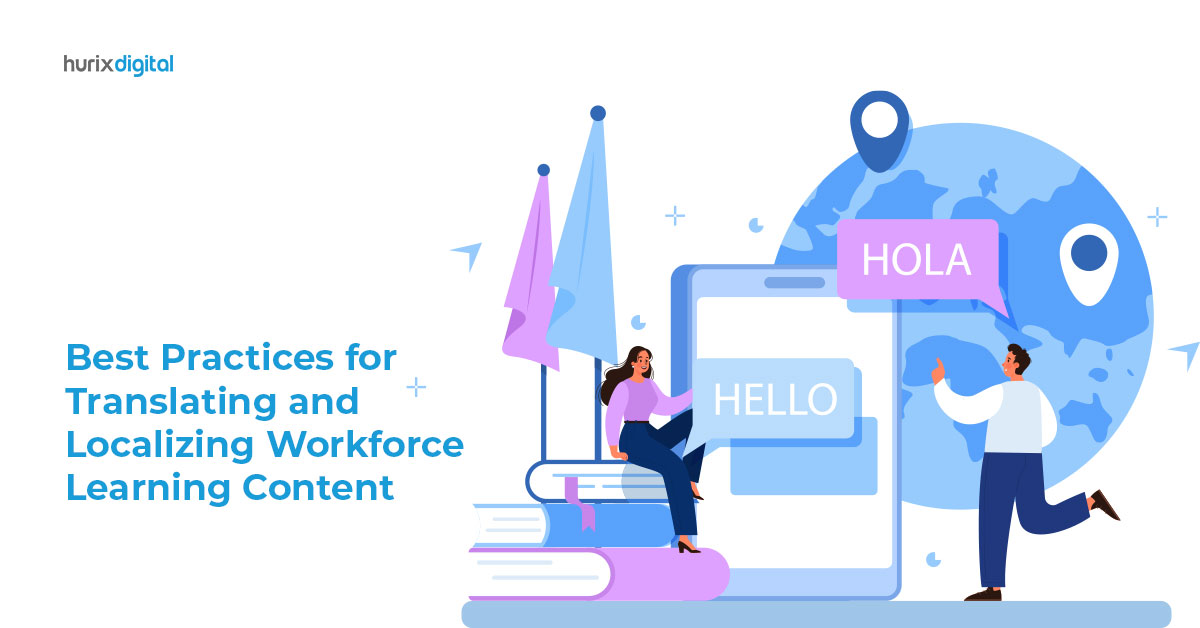
The Art & Science of Localizing Soft Skills Training: Overcoming Idiomatic and Cultural Challenges
Summary
The article discusses localizing soft skills training for global audiences, addressing cultural challenges and suggesting adaptive translation and localization services, with trends like NLP transforming the process.
In today’s global business environment, communicating effectively across cultures is more crucial than ever. Soft skills training, designed to enhance interpersonal skills and professional effectiveness, must be localized to resonate with diverse audiences.
According to the Forrester report, organizations that focus on language and training localization see a 21% improvement in customer and employee experience metrics compared to those that do not prioritize it.
This emphasizes the importance of modifying training resources beyond translating them to guarantee cultural appropriateness and participation.
Table of Contents:
- Understanding Localization in Soft Skills Training
- Challenges of Idioms and Colloquialisms
- Strategies for Effective Localization
- Best Practices for Localizing Soft Skills Training
- Future Trends in Localization
- Final Words
Understanding Localization in Soft Skills Training
Localization is adapting content and methods to meet diverse audiences’ specific cultural, linguistic, and contextual needs. This process is crucial for organizations aiming to enhance their workforce’s ability to collaborate, lead, and engage effectively across various cultural contexts.
Forrester highlights that localization is critical for achieving a trusted brand reputation and a positive customer experience, especially in B2B contexts. Their study found that 75% of B2B buyers consider having sales materials in their language as very important, and 67% expect localized websites to enhance their purchasing decisions.
According to McKinsey, many companies invest heavily in training; however, ensuring it translates into measurable business performance improvements is the real challenge. The biggest obstacles often lie in addressing pre-existing employee mindsets and maintaining momentum after the training ends.
This highlights the value of culturally adapted training programs that go beyond simple translation. These programs foster greater engagement and skill application by tailoring content to global teams’ specific needs and cultural nuances.
Also Read: The Importance of Translation and Localization in Workforce Learning
Challenges of Idioms and Colloquialisms
Idioms and colloquialisms bring several challenges in language learning and communication. These expressions are often deeply embedded in cultural contexts, leading to misunderstandings for non-native speakers and translators.
1. Context-Dependence
Idioms frequently rely on context for their meanings. For instance, “kick the bucket” refers to death, but this meaning can be missed without the right background. This reliance on situational cues can confuse learners who might interpret idioms too literally.
2. Ambiguity
Another issue is ambiguity. Many idioms can be understood in different ways. Take “hit the nail on the head,” meaning hitting a nail or describing someone as spot-on. This duality of meaning can confuse people who don’t know these phrases well.
3. Cultural Nuances
Cultural nuances are also significant. An idiom like “the early bird catches the worm” reflects cultural values regarding time that may not be accepted in other cultures. This cultural link means that students and translators need to understand the social background of these expressions.
4. Language Evolution
Language is evolving, and idiomatic phrases evolve, too. New idioms become trendy, and those commonly heard may disappear from usage, confusing learners and translators. For instance, younger generations may use idioms common to the younger generations that older speakers do not understand.
5. Lack of Direct Translation
Most idiomatic phrases do not have direct translations. For instance, in English, it is common to say, “It’s raining cats and dogs,” which does not have a direct translation in many other languages, potentially leaving the translator with challenges to try to communicate without changing the meaning of the phrase.
6. Contextual Variability
An idiom can have an abstract and contextual meaning. In other words, even though “barking up the wrong tree” refers to taking an incorrect course of action, evaluating the interpretation in the context of the surrounding discussion is necessary. This calls for a more precise understanding of the context for clear communication.
7. Cognitive Load for Learners
For language learners, mastering idioms increases cognitive load, as they must remember not only the phrases but also their meanings and appropriate contexts. Students can become overly tired of the dual task of processing grammar and vocabulary while contextualizing idioms correctly.
8. Emotional Connotations
Idioms often carry emotional weight that may not translate well. For example, the phrase “bit off more than he/she can chew.” In this case, a literal meaning may not convey how the idiom adds flavor to the length of their struggle. Having an understanding of these emotional elements is key to providing clear communication.
Idioms and colloquialisms present complex challenges that can significantly impact language learning and translation efforts. Educators and translators can develop strategies to improve understanding and facilitate effective communication across cultures by recognizing ambiguity, cultural nuances, and language evolution.
Addressing these challenges is essential for enhancing comprehension and fostering better interactions in diverse linguistic environments.
Strategies for Effective Localization
Companies must navigate challenges such as differing communication styles, social norms, and regional variations in language. Organizations can enhance their localization efforts by implementing targeted strategies and ensuring diverse stakeholders understand and appreciate their messages.
1. Methods of Translating
- Literal vs. Adaptive Translation: Deciding between literal and adaptive translation is essential. Literal translations frequently do not accurately communicate the desired message, whereas adaptive translation requires identifying culturally appropriate substitutes. For instance, translating the phrase “hit the ground running” might involve adjusting to a regional expression that communicates the idea of swift action.
- Contextual Understanding: Contextual comprehension is crucial to guaranteeing translations preserve the initial context and tone. Tools like SDL Trados and Memsource assist in achieving contextual accuracy and preserving idiomatic nuances.
2. Adapting to the Culture
- Studying Local Norms: Comprehending local cultural norms and communication styles is essential for successful localization. Levels of humor and formality differ greatly among cultures, leading to varying perceptions of politeness and humor that may not align across different cultural contexts.
- Involving local specialists: Working with native speakers and experts in localization can help guarantee that the content is culturally suitable and connects with the intended audience. These professionals assist in modifying idioms and phrases to conform to the customs and expectations of the specific region.
3. Leveraging Localization Services
- Choosing the Right Service Provider: Partnering with specialized localization services can enhance content quality. Providers like Lionbridge and TransPerfect offer expertise in handling complex localization needs, ensuring accurate adaptation of idioms in training and colloquialisms.
- Utilizing Technology: Modern localization technologies, including AI-based translation and machine learning, streamline the adaptation process and improve efficiency. These technologies help manage large volumes of content and ensure consistency across different languages.
Also Read: Creating an eLearning Localization Strategy for Global Training? Don’t Miss These Six Tips!
Best Practices for Localizing Soft Skills Training
The following are the best practices for soft skills localization training:
1. Developing a Localization Strategy
Creating a robust localization strategy involves understanding the target audience’s cultural and linguistic needs and developing a plan to adapt content accordingly. This strategy should align with the training objectives to ensure that localized content is relevant and effective.
2. Oversight and Assessment of Localization Initiatives
Organizations should monitor metrics like participant input, levels of engagement, and training results to measure the effectiveness of localization. Continuous assessment and adjustment with user input enhances the quality of tailored content and guarantees its relevance to various audiences.
3. Involving Local Stakeholders
Utilizing local partners during the localization process will guarantee that the training materials accurately represent the audience. Local partners can recognize crucial cultural nuances, preferences, and sensitivities that outsiders would not be able to detect, ultimately enhancing the effectiveness of the training.
Future Trends in Localization
Following are the future trends in localization:
1. Emerging Technologies
The localization landscape is evolving with technological advancements. Forrester notes that over 700 tools are available for various localization needs, including translation workflow management, machine translation, and quality management. These technologies offer significant ROI by enhancing capacity, speed, and customer engagement.
2. Evolving Best Practices
As localization practices advance, organizations must stay updated on the latest trends and best practices. This includes integrating new technologies, refining strategies, and breaking down silos to treat localization as an enterprise-level function. Successful localization leaders incorporate these practices to improve overall efficiency and effectiveness.
3. Natural Language Processing (NLP)
NLP transforms the localization field by allowing a deeper comprehension and production of human language. Through improvements in NLP, localization initiatives can attain greater precision and contextual significance, enhancing communication effectiveness among diverse languages and cultures.
4. Automated Localization Platforms
Automated localization platforms are revolutionizing localization by speeding up turnaround and lowering costs. These platforms utilize AI and machine learning to enable a high degree of seamless content adaptation or translation to meet the market’s demands quickly.
Also Read: Exploring the Latest Trends in Localization Technology
Final Words
As businesses increasingly understand the importance of localization, paying attention to cultural details such as idiomatic expressions and informal speech becomes essential. This also gives them a competitive edge. Efficient localization enables businesses to engage with various learners, guaranteeing that effective training programs are available.
At Hurix Digital, we focus on providing personalized localization solutions to guarantee that your training programs are relevant for all participants, regardless of their location or language localization challenges.
Connect with our team to adapt your training material for success in your local area.

A highly enthusiastic and motivated sales professional with over twenty five years of experience in solution selling of training-related applications and services. Maintains an assertive and dynamic style that generates results. Ability to establish long-term relationships with clients built on trust, quality of service and strategic vision. Specializes in financial services, higher ed, publishing and government in the areas of learning and development.








